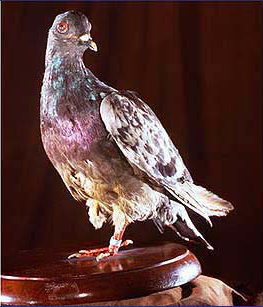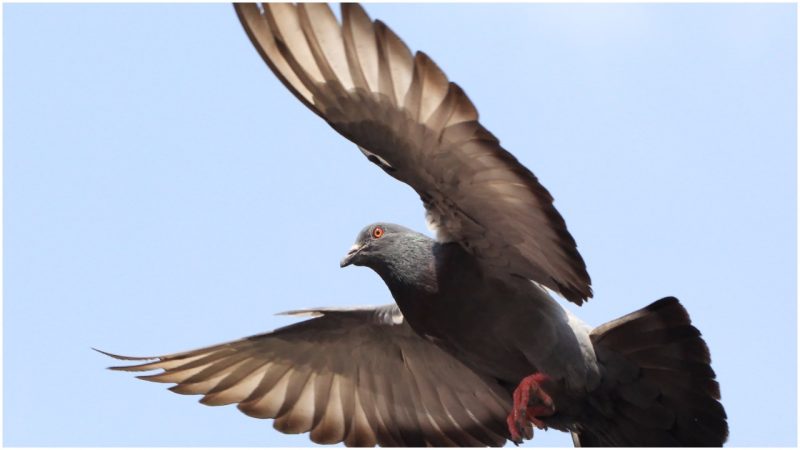It’s the eve of October 4, 1918. “The War to End All Wars” is slowly but surely coming to an end. The Allied Forces are making their last offensive push against the German troops through the valley in Chatel Chéhéry in northeastern France. Germany is losing the war and iys soldiers, exhausted, demoralized, and struck by influenza, are making a last stand in the Argonne Forest along the banks of the Meuse River.
No less than 400,000 allied soldiers were deployed to the spot just weeks previously to join their brothers in arms in one of the biggest conflicts of the war, the Meuse-Argonne Offensive. Almost 200,000 were dead or severely wounded by the end the battle and the Armistice on November 11, 1918. Some 25,000 of them were American boys who never made the return home, even though they hoped and prayed for it, knowing it was so, so close.
However, 197 men were lucky enough to be saved and by none other than a pigeon–those bread-crumb-eating little feathered friends of ours that can ruin even the best of our days оn occasion or smear our windshields with their surprise droppings from the sky.
They are not considered to be the brightest of birds but are extremely loyal and devoted, with an extraordinary ability to always find the way back home. As such, pigeons were trained to fit our needs and have been employed as messengers and couriers for eons, enabling us to deliver a tweet or an SMS long before we came to enjoy the privilege of electricity and advanced technology.

For instance, during the two world wars, the U.S. military admitted as many as 200,000 pigeons into its ranks in order to conduct surveillance or transport messages. Our hero was one of them, trained by the British government and donated to the U.S. military right before the war, and one of the 600 owned and flown in France by the United States Army Signal Corps. On that day, our pigeon found itself in the hands of Major Charles Whittlesey, who was trapped behind enemy lines with the 308th Battalion of the 77th division, on the downward slope of a hill in the heart of the Argonne Forest.
The Allies were making a tactical retreat, but the 308th got stuck behind–no one knew their exact location or if they were alive even. Whittlesey’s “Lost Battalion” of 200 men was hungry, dehydrated, under heavy fire and unable to move without revealing their whereabouts to the enemy. Major Whittlesey wrote a message, put it in a metal case, and turned to his feathered trusties to deliver it.
The first pigeon didn’t make it, nor did the second, both gunned down almost instantly by the Germans. He then attached this desperate plea to the leg of another pigeon, one that had already passed critical information within the American sector at Verdun 12 times.
And as before, just as it flew out from his hand, the Germans instantly opened fire at it. The bird got shot once in the breast. It was shot for the second time, but in his leg now. Still, it kept on flying, for 25 miles more, against the wind and oblivious to the heavy rain of bullets. And in about 25 minutes or less it reached where it was supposed to go, blinded in one eye, with the leg carrying the message dangling on a single tendon. One of the allied soldiers at the coop untangled the metal case with gentle care so he would not tear the leg out completely. He opened the message:
“We are along the road parallel to 276.4. Our own artillery is dropping a barrage directly on us. For heaven’s sake, stop it.”
They did immediately and extracted Major Whittlesey and his whole battalion back to safety, and thanks to this pigeon that never gave up, back to their homes and the embraces of their loved ones. The pigeon was later named Cher Ami, meaning “Dear Friend” in French. A dear friend she was indeed, and a real hero within the 77th division.
The people whose lives had been saved thanks to her, gave all to help and now save their little friend in return. They saved her life but unfortunately couldn’t save the leg. Instead, the medics shaped a new wooden leg for her to use. Back in the United States after the war had finally ended, the carrier pigeon was awarded a Croix de Guerre medal, with a bronze oak leaf cluster ribbon device, to recognize her great sacrifice and heroism in the War.
The eleventh hour on the eleventh day of the eleventh month in 2018 will mark the 100th anniversary of the Armistice, and 100 years from the moment when World War I finally came to an end. So next time, when we are scraping bird’s droppings from our windshields or getting angry at them for ruining our best presentable outfits, it is probably nice to remember this little pigeon’s existence and how she risked her life to save hundreds. Cher Ami died on June 13, 1919, and her carefully preserved body is displayed at the Smithsonian Institution.
